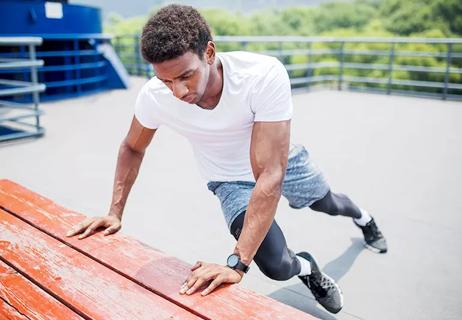Even yoga or pilates can cause issues

If you’re a younger or middle-aged adult bothered by hip pain, your first thought is likely not about hip surgery. But you may need it — many young, athletic people are having hip surgery after finding out that a deep cartilage tear is causing their mysterious, nagging pain.
Advertisement
Cleveland Clinic is a non-profit academic medical center. Advertising on our site helps support our mission. We do not endorse non-Cleveland Clinic products or services. Policy
Orthopedic surgeon James Rosneck, MD, answers our questions, detailing what you need to know about identifying and treating these painful labral tears.
A: It is a tear in the ring of cartilage (labrum) in your hip that cushions and seals the joint.
A: Trauma (from a car accident, for instance) can cause a labral tear. But we see it more frequently among athletes whose activities flex the hip while twisting. We see this in all kinds of sports — even activities like yoga and Pilates.
A variation of normal anatomy can cause a labral tear as well. Often this is hip impingement, where the shape of the hip causes abnormal contact between the ball and socket of the joint. The most common root cause of a labral tear is onset over time due to physical activity combined with a bony abnormality.
A: Yes. There’s about a 2-1 ratio of women to men and it often happens in younger, active patients.
A: Many people can have a tear and not have any symptoms at all.
If you do notice a symptom, though, it’s typically pain deep in the hip joint that doesn’t get worse when you push on the area. It often comes with certain activities (movement in a particular direction, for instance).
A: We can get most of the information we need from a health history, examination and a good set of X-rays. An MRI will likely also be done to confirm the diagnosis.
Advertisement
A: There are a few conservative treatments that are a first line of defense in treating a labral tear. We typically try them for three to six months to see if we can alleviate the pain.
These options include:
A: If these things aren’t working, we can do an MRI to get a better idea of the pathology of the injury. This shows whether there is cartilage damage, arthritis in the joint or injury to other muscles that might cause problems.
Depending on the patience of the patient and how severe the symptoms are, your doctor might recommend surgery to fix it.
A: This is an arthroscopic outpatient surgery that lasts one to two hours. Though it’s relatively quick and uses small incisions, it is not really minimally invasive.
The surgeon fixes the tear, but the most important part is treating the abnormality in the bone to keep it from happening again. Because of this, we have to distract the hip socket, which causes a longer recovery.
A general recovery timeline looks like this:
If you are having hip pain deep in the joint that lasts for more than a month and occurs with particular movements, check with your doctor to see if you might have a labral tear.
The sooner you pinpoint and address the problem, the sooner you can get back to your normal activities with less pain.
Advertisement
Learn more about our editorial process.
Advertisement

Strengthen your hip muscles with yoga

Gardening, jogging, tennis or golf may trigger painful inflammation

Take the ache away from your joints with these at-home exercises

Yes, but you have to go well beyond stretches and yoga poses

Luckily, there are simple remedies

How to pinpoint the source of your pain

Most recommended precautions center around minimizing bruising or swelling

Type 2 diabetes isn’t inevitable with these dietary changes

Applying a hot or cold compress can help with pain